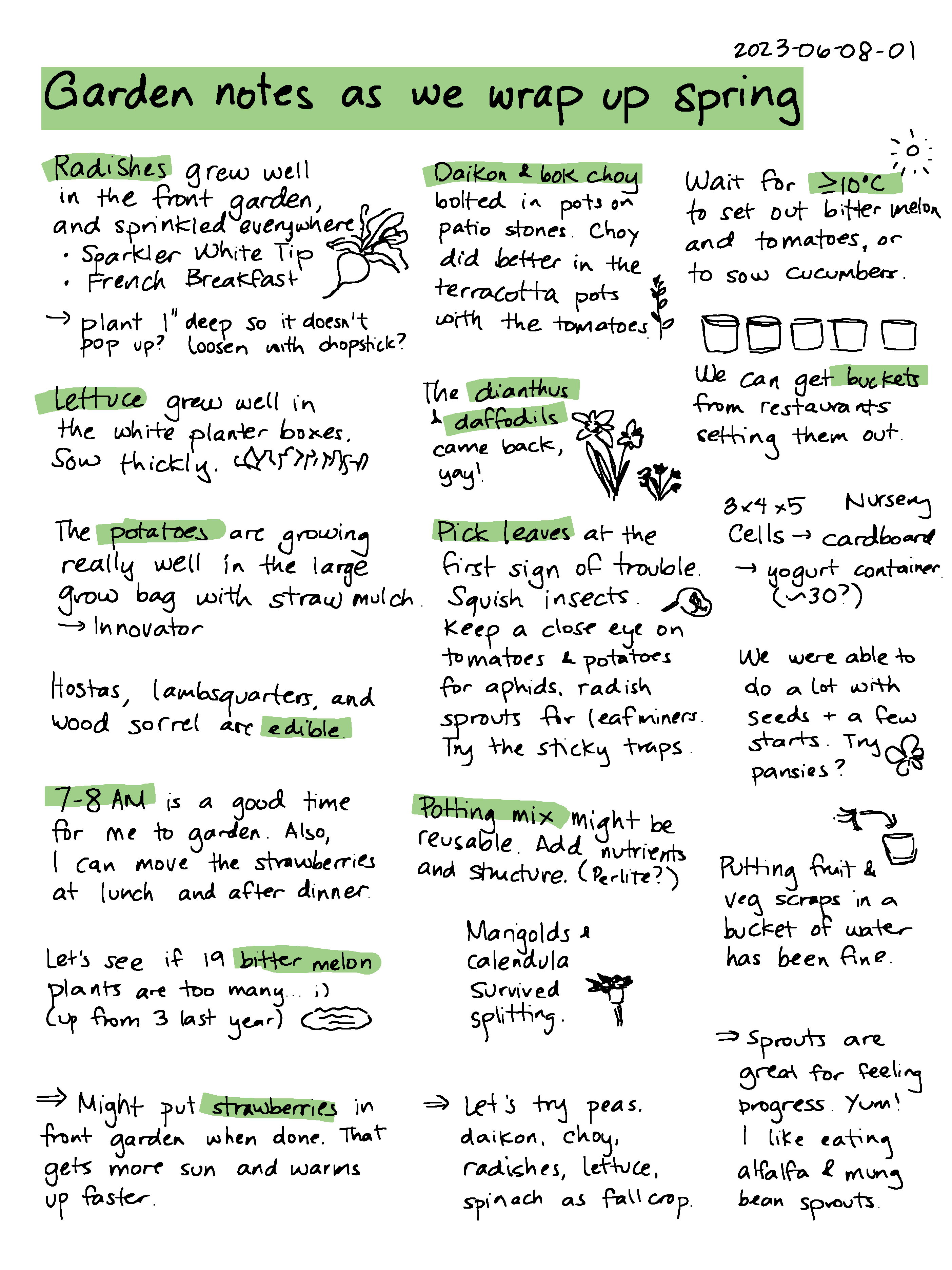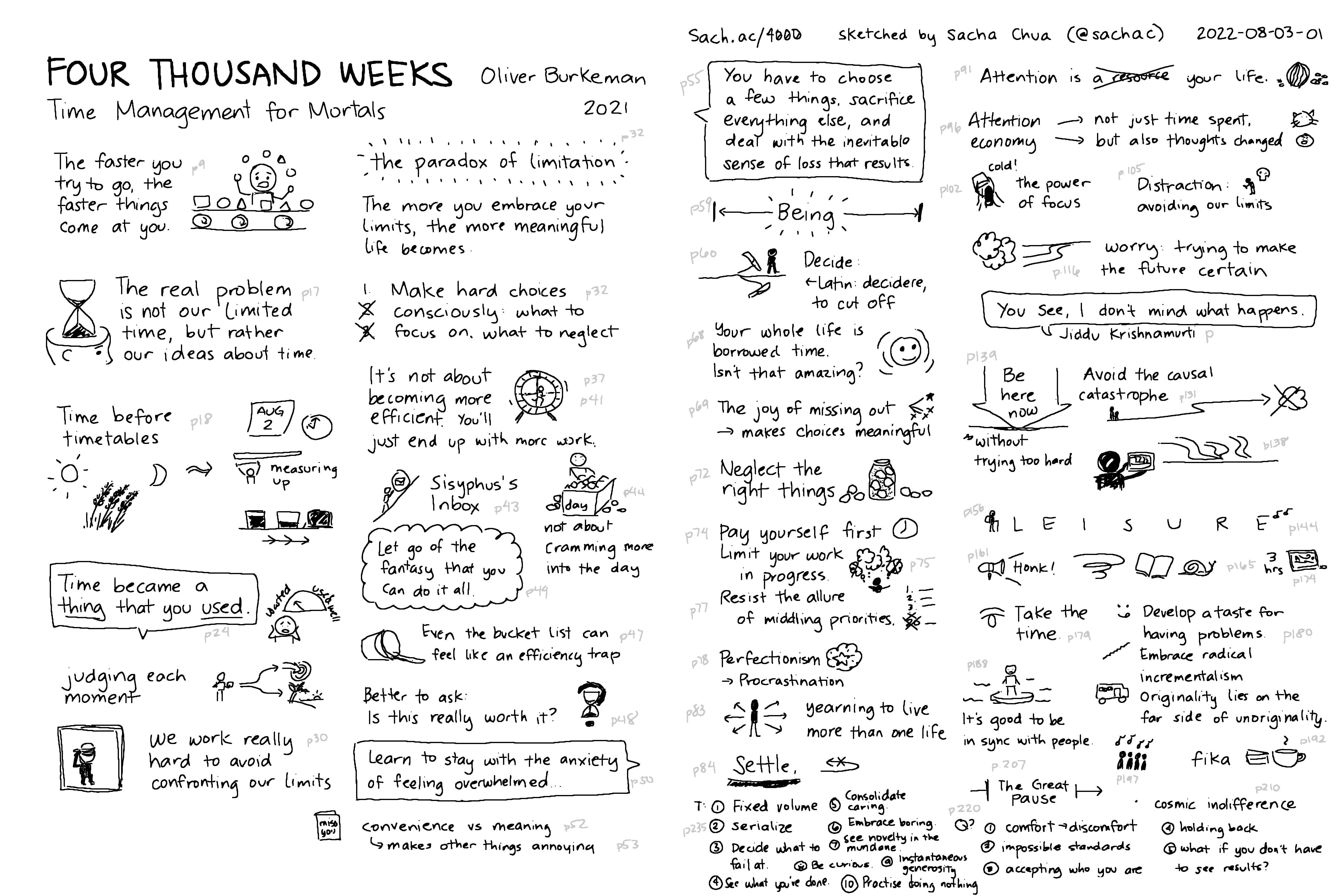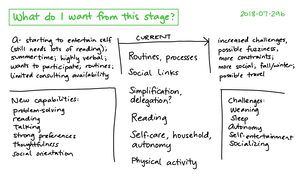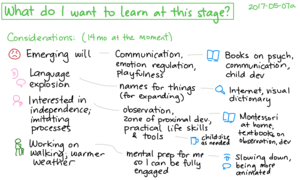Garden notes as we wrap up spring
| gardening
Text from the sketch
Garden notes as we wrap up spring
- Radishes grew well in the front garden, and sprinkled everywhere: Sparkler White Tip, French Breakfast. Plant 1" deep so it doesn't pop up? Loosen with chopstick?
- Daikon & bok choy bolted in pots on patio stones. Choy did better in the terracotta pots with the tomatoes
- Wait for ≥10°C to set out bitter melon and tomatoes, or to sow cucumbers.
- Lettuce grew well in the white planter boxes. Sow thickly.
- The dianthus and daffodils came back, yay!
- We can get buckets from restaurants setting them out.
- The potatoes are are growing really well in the large grow bag with straw mulch: Innovator.
- Hostas, lambsquarters, and wood sorrel are edible.
- Pick leaves at the first sign of trouble. Squish insects. Keep a close eye on tomatoes and potatoes for aphids; radish sprouts for leaf miners. Try the sticky traps.
- 3x4 x5 Nursery cells -> cardboard -> yogurt container. (~30?)
- We were able to do a lot with seeds + a few starts. Try pansies?
- Potting mix might be reusable. Add nutrients and structure. (Perlite?)
- Putting fruit and veg scraps in a bucket of water has been fine.
- Marigolds and calendula survived splitting.
- 7-8 AM is a good time for me to garden. Also, I can move the strawberries at lunch and after dinner.
- Let's see if 19 bitter melon plants are too many… ;) (up from 3 last year)
- Might put strawberries in front garden when done. That gets more sun and warms up faster.
- Let's try peas, daikon, choy, radishes, lettuce, spinach as fall crop.
- Sprouts are great for feeling progress. Yum! I like eating alfalfa and mung bean sprouts.
I've been turning the compost every few days, incorporating fruit/veg scraps and cardboard/paper in the process. The compost heap was around 82'F on June 7. It reached 94'F on June 14 after I added a bunch of browns from the dried leaves in the other bin, and 100'F on June 24 after W- added the slightly-decomposed maple seeds he got when he cleared out the eavestroughs. Today it reached 110'F. I could feel the heat coming off it as I turned it. I wonder if I can get the pile to steam like it did in 2011. I think I can still add some new material to the middle of the pile when I turn it.
I've been working on learning more about gardening. This year, I'm experimenting with watching the garden carefully and plucking off leaves that look bad: powdery mildew, lots of flea beetle holes, leafminer activity, etc. I keep those leaves out of our compost. I've also been squishing lots of aphids and a few slugs.
I'm also learning about the different plants that tend to crop up, and which ones are edible. I've been sauteing lambsquarters along with our radish greens. Today I noticed some purslane. I haven't tried the wood sorrel or the clover. Maybe next year. I ate some hosta shoots when they emerged, and maybe I'll try the flowers soon. The daylilies are about to bloom. I wonder if I'm brave enough to try them.
Summer has just started. The tomatoes and the bitter melons are beginning to set fruit. I'll probably need to move the tomatoes into the cage at some point, since there are squirrels and raccoons who like to drop by.
The radishes are flowering. I'll either saute them soon or try eating the seed pods of any I've missed.
Lots of flowers are coming up, although part of the front garden didn't end up as flowery as I had hoped. Might need more nutrients. That's okay, I can probably put other plants in there along with some of the compost.
I have some plants I'm taking care of inside, and it might be good to see if I can get some lettuce going inside as well.
The garden is doing its thing!




